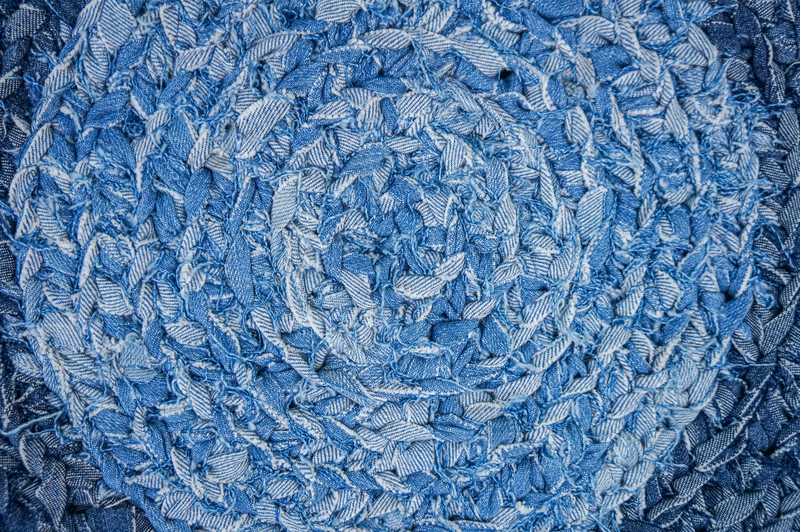What to Know Before Disposing of Old Cookware
Have you recently upgraded your kitchen and now face a pile of old pots, pans, and utensils? Disposing of old cookware might seem simple, but tossing everything in the trash isn't always the best idea. From environmental impact to recycling options and donation opportunities, understanding the process is crucial. In this comprehensive guide, we'll discuss what you need to know before disposing of old cookware, ensuring your choices are environmentally responsible, safe, and even beneficial to your community.
Understanding the Composition of Your Old Cookware
Before deciding how to get rid of your old cookware, it's important to know what materials you're dealing with. Common cookware materials include:
- Aluminum
- Stainless Steel
- Cast Iron
- Non-stick (Teflon-coated)
- Copper
- Ceramic
- Glass
- Enamel-coated
Each material has its own disposal and recycling considerations. Understanding the type of cookware is the first step in responsibly disposing of your kitchen items. Metal cookware like aluminum, stainless steel, and cast iron are often recyclable, while non-stick or ceramic pieces may require special handling.

Why Is Proper Cookware Disposal Important?
The way you dispose of cookware matters. Here's why:
- Reduces landfill waste: Thousands of tons of old cookware are discarded every year, adding to environmental stress.
- Promotes recycling and re-use: Properly recycling metal cookware helps conserve resources.
- Avoids harmful chemicals: Non-stick coatings and certain metals can leach toxins if not disposed of correctly.
- Supports the community: Donating usable items helps those in need and minimizes unnecessary waste.
Environmental Impact of Improper Disposing
Non-biodegradable cookware can take hundreds of years to decompose. Improper disposal may release chemicals or heavy metals, contaminating soil and water. By making the right choices, you help protect the environment and build a healthier planet.
How to Determine If Your Cookware Is Reusable or Recyclable
Before throwing your cookware out, ask yourself these questions:
- Is it still usable? Pans with cosmetic wear but no structural damage can often be donated or repurposed.
- Is it recyclable? Check with your local recycling facilities for accepted materials.
- Does it pose a health hazard? Cookware with damaged non-stick coating or rust may not be safe for food preparation and should be disposed of carefully.
Many items can either be recycled, donated, repurposed, or safely disposed of. Always choose the most sustainable path before sending anything to a landfill.
Recycling Old Cookware: What You Need to Know
Recycling Metal Cookware
Aluminum, stainless steel, and cast iron cookware can typically be recycled but often require a trip to a specialized recycling center or scrap yard. Here's how to prepare these items:
- Remove any non-metal parts, such as plastic handles or lids.
- Clean off food residue.
- Check for recycling codes or consult your city's waste management guidelines.
Not all kerbside programs accept cookware because of potential damage to sorting machines. Visit your municipality's website or contact local recycling centers for details on metal cookware recycling.
Non-Stick and Teflon-Coated Cookware
Teflon and non-stick coatings complicate recycling efforts. Most facilities do not accept coated pans due to chemical concerns. If the coating is heavily scratched or peeling, dispose of the pan through your community's hazardous waste program when possible. Some manufacturers offer recycling take-back programs for their own products, so check with the brand for options.
Ceramic, Glass, and Enamel Cookware
These materials rarely go into standard recycling streams. For glass cookware like Pyrex, or ceramics and enamel, your best bet may be:
- Upcycling or repurposing at home.
- Dropping items at specialized recycling events.
- Disposing of in the regular trash as a last resort (but wrap to prevent injury to handlers).
Donation: Giving Old Cookware New Life
If your pans and pots are still functional, consider donating them. Here are some options for re-homing old but functional cookware:
- Charities and thrift stores: Goodwill, Salvation Army, and local shelters often accept cookware in good condition.
- Community centers or soup kitchens: Non-profit organizations can be grateful recipients.
- Online marketplaces: Post items on Craigslist, Facebook Marketplace, Nextdoor, or Freecycle.
- Friends and family: College students or first-time renters may welcome used cookware.
Before donating, clean all items thoroughly and check donation guidelines for accepted conditions and items.
Creative Ways to Repurpose Old Cookware
Don't want to throw them away? Repurposing old cookware can be fun and sustainable. Here are some ideas:
- Garden planters: Use large pots or pans as planters for herbs or flowers.
- Organizers: Skillets and saucepans are excellent for holding office supplies, craft materials, or kitchen gadgets.
- Wall art: Hang old utensils or pans for a rustic kitchen design.
- Bird feeders: Transform a colander or saucepan into a unique bird feeder.
- Candle molds: Old muffin tins or bread pans make creative candle containers.
Upcycling old cookware is not just eco-friendly; it can also add a personal touch to your home or garden decor.
Safety Tips When Disposing of Cookware
Discarding cookware--especially broken or damaged pieces--can be hazardous if not done carefully. Keep these safety guidelines in mind:
- Wrap broken glass or ceramic cookware in newspaper or bubble wrap to prevent injury.
- Notify sanitation workers if disposing of sharp or broken items.
- Separate chemicals (such as old non-stick pans or treated metals) from regular trash if required by your community.
- Check for recalls on potentially hazardous cookware before discarding or recycling.
Responsible Disposal of Non-Recyclable Cookware
If your cookware isn't recyclable or suitable for donation, take extra care with disposal:
- Inquire about local hazardous waste collection days.
- Follow official municipal waste division recommendations.
- If dropping cookware in the trash, strongly wrap sharp components to protect sanitation workers.
Special Disposal Considerations for Teflon and Nonstick Cookware
Damaged non-stick cookware not only can't be recycled in normal streams but may also leach harmful substances. Never incinerate non-stick pans or throw them in open dumps. If your town has a hazardous waste program, use it for disposal. Some towns partner with retailers or brands for proper non-stick cookware disposal--check manufacturer websites for take-back or mail-in options.
Tips to Prolong the Life of Your Cookware and Minimize Waste
Before you even think about getting rid of your pans and pots, try to extend their lifespan with these tips:
- Clean with non-abrasive sponges.
- Don't use metal utensils on non-stick or ceramic surfaces.
- Season cast iron pans properly.
- Repair minor scratches with food-safe enamel or protective sprays.
- Store your cookware properly to avoid dents and chips.
With routine care, your cookware will last longer, reducing the frequency and volume of items to dispose of.

Frequently Asked Questions About Disposing of Old Cookware
Can I Put Old Pots and Pans in My Recycle Bin?
Usually not. Most curbside recycling programs do not accept cookware due to size, shape, and material concerns. Check with your local facility or bring them to a scrap metal specialist.
What If My Pan Is Rusty or the Coating Is Peeling?
Rusty or peeling-coated pans can't be safely used or donated. Try to recycle as scrap metal if possible. For non-stick, consult community hazardous waste programs.
Can I Donate Cookware with Minor Scratches?
Yes, as long as the item is safe to use and has no hazardous damage or peeling coatings. Thoroughly clean before donating.
Is There Any Way to Restore Old Cookware?
Certain types like cast iron and stainless steel can often be restored by seasoning or deep cleaning. Non-stick cookware with coating damage should not be restored for cooking use.
Conclusion: Making the Best Choice for Your Old Cookware
Knowing the best way to discard cookware helps protect the environment, saves resources, and benefits your community. Next time you clean out the kitchen drawers, remember to:
- Identify your cookware's materials.
- Donate or repurpose usable items.
- Use proper recycling channels for metals and check hazardous waste programs for coated pans.
- Practice safety when disposing of broken or sharp pieces.
Responsible cookware disposal not only keeps your home clutter-free but also benefits the planet. Every pan properly recycled, repurposed, or donated makes a difference. Now that you understand what to know before disposing of old cookware, go ahead--make the right choice!